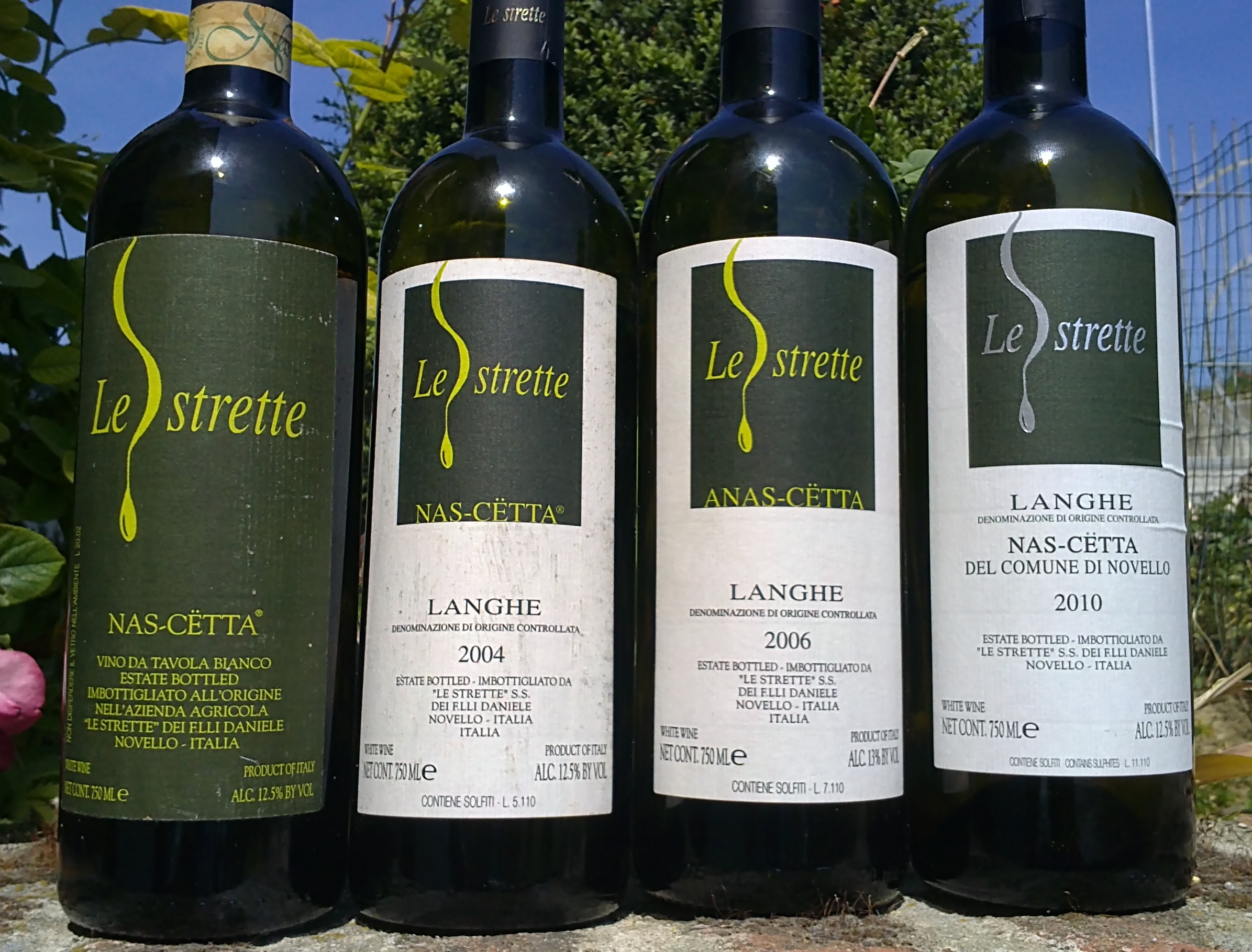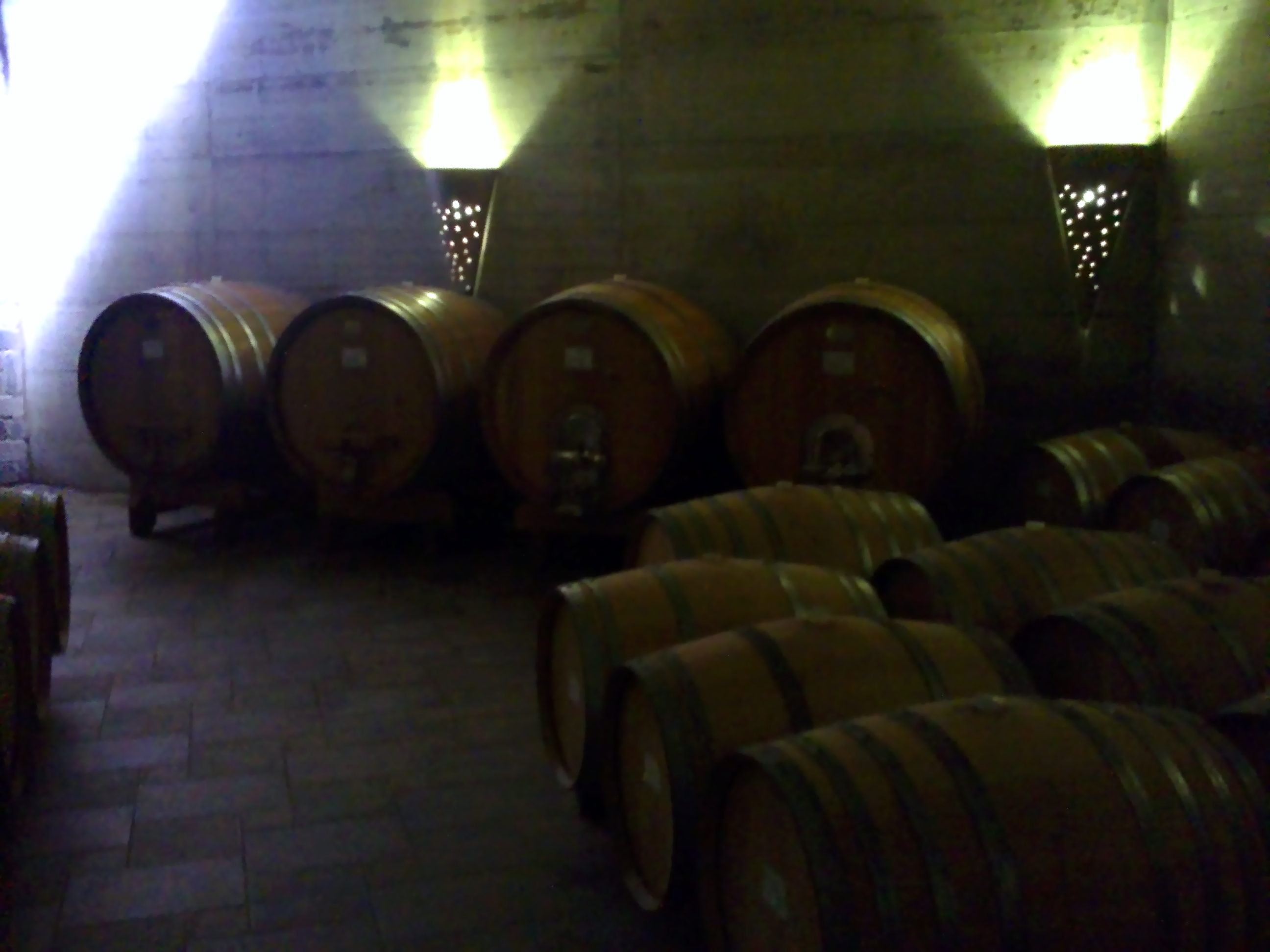Le Strette: dreams come true
Posted on 12 May 2011
My next visit during Nebbiolo Prima 2011 was at Le Strette winery. There were two reasons why I wanted to come here: it’s one of only two producers of the rare indigenous white grape Nascetta (see here for an earlier article about it), and during the 2006 Barolo blind tasting last year, their Bergera Pezzole was one of my favourites.

The evolution of this label is a story of struggle with the convoluted Italian legislature: until 2002 Nascetta was not recognised as an authorised grape, and the Langhe Nascetta DOC was only established in 2010.
The story of Le Strette is a refreshing and encouraging one. Brothers Mauro and Savio Daniele worked as winemakers for the large Ceretto winery before deciding to go independent in 1997. They have now assembled 3.5 hectares of vineyards and produce just 20K bottles per year in a tiny garage-like cellar. You’d think that without money for investment and lacking economies of scale, life would be really tough for a producer like this, but in a few years Le Strette have achieved quite some recognition in Italy and beyond for the sheer quality of their wines. Prices remain extremely reasonable with the Nascetta costing 10€ and the two Barolos 22 and 25€ per bottle respectively.
I was treated to a unique vertical of the white Nascetta ranging from the just bottled 2010 to the 2002. Nascetta is a variety of obscure origins but recent studies suggest it actually originated from the village of Novello and might be genetically related to the red Nebbiolo. In contrast to the white Arneis I blogged on here and here, Nascetta yields a powerful wine with plenty of structure. So the 2010 is not ready to drink and the 2006 is just approaching maturity. The best vintage we tried was 2004, beautifully harmonious with an elegant bouquet of wax and honey and plenty of punch. In fact even the 2002 seems to have several years ahead. Nascetta is not an aromatic grape – it tends towards reduction – but with time in bottle, it develops a profile of dried herbs and summer fruits that makes you think of some Mediterranean whites such as Vermentino or Roussanne. And with its strong acidic structure, a decade of ageing is easily within the reach of Nascetta.
We then tasted five Barolos. Bergera and Pezzole are two lesser-known single vineyards located in Novello at 420 meters (high by Barolo standards). The Daniele brothers show what can be achieved from this semi-forgotten cru with proper dedication. Due to its high altitude provenance the wine is very tight and structured and needs at least 7 or 8 years of ageing. In fact the 2003 (tasted from magnum) is nowhere like mature. The tight grain of this wine is very impressive especially in balanced vintages like 2004 and 2006; though seeing some new oak, they are capable of eating it up easily. My preferred vintage today was the 2005 which is a little fatter and broader on the palate; with something like wild boar on the menu, you could drink it today. Le Strette’s other Barolo, Bergeisa, comes from the Barolo town on lower altitude and is a more elegant, subtle wine with very good precision. We also tasted a fantastic 2009 Barbera from 70-year-old vines; I usually am very nervous about barrique-aged Barberas but this is a beautiful example of the grape, structured, vinous, fresh and outstandingly deep.
Watch a video with the Daniele brothers talking about their work with Nascetta by clicking the image below:
My trip to Piedmont including flights, accommodation and wine tasting programme is sponsored by the Albeisa association of wine producers.




